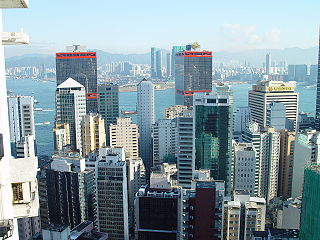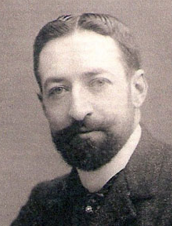
Planning theory is the body of scientific concepts, definitions, behavioral relationships, and assumptions that define the body of knowledge of urban planning. There are nine procedural theories of planning that remain the principal theories of planning procedure today: the Rational-Comprehensive approach, the Incremental approach, the Transformative Incremental (TI) approach, the Transactive approach, the Communicative approach, the Advocacy approach, the Equity approach, the Radical approach, and the Humanist or Phenomenological approach.

The linear city is an urban plan for an elongated urban formation that was proposed by Arturo Soria y Mata in 1882. The city would consist of a series of functionally specialized parallel sectors. Generally, the city would run parallel to a river and be built so that the dominant wind would blow from the residential areas to the industrial strip. The sectors of a linear city would be:
- a purely segregated zone for railway lines,
- a zone of production and communal enterprises, with related scientific, technical and educational institutions,
- a residential zone, including a band of social institutions, a band of residential buildings and a "children's band",
- a park zone,
- an agricultural zone with gardens and state-run farms.

The Buenos Aires Underground, locally known as Subte, is a rapid transit system that serves the area of the city of Buenos Aires, Argentina. The first section of this network opened in 1913, making it the 13th earliest subway network in the world and the first underground railway in Latin America, the Southern Hemisphere, and the Spanish-speaking world, with the Madrid Metro opening nearly six years later, in 1919. As of 2023, Buenos Aires is the only Argentine city with a metro system.

A linear settlement is a settlement or group of buildings that is formed in a long line. Many of these settlements are formed along a transport route, such as a road, river, or canal. Others form due to physical restrictions, such as coastlines, mountains, hills or valleys. Linear settlements may have no obvious centre.

Ciudad Lineal is one of 21 districts of Madrid, Spain.

Golden Mile Complex is a high-rise commercial and residential building on Beach Road in Kallang, Singapore, within walking distance to Nicoll Highway MRT station. The building was formerly known as Woh Hup Complex. Prior to collective sale, the complex contained 411 shops and 500 parking spaces. The building was largely an ethnic enclave for the Thai population in Singapore.

Enrique Vila-Matas is a Spanish author. He has authored several award-winning books that mix genres and has been branded as one of the most original and prominent writers in the Spanish language.
Soria is a city in north-central Spain.

Ville radieuse was an unrealised urban design project designed by the French-Swiss architect Le Corbusier in 1930. It constitutes one of the most influential and controversial urban design doctrines of European modernism.

Arturo Estrada Hernández is a Mexican painter, one of a group of Frida Kahlo’s students called “Los Fridos.” Estrada is mostly known for his mural work, which remains faithful to the figurative style and ideology of Mexican muralism. He has created murals in various parts of Mexico in both public and private places, including a 1988 mural found in the Centro Médico metro station in Mexico City. He has also taught classes at the Escuela Nacional de Pintura, Escultura y Grabado "La Esmeralda", where he was a student, since 1948 and continues to give classes there and other venues. He lives in his birthplace: Panindicuaro, Michoacán.
The Parque Lineal Veredas del Labrador, also known as Parque Lineal de Ponce, Veredas del Labrador, or just Parque Lineal, is a passive park in Ponce, Puerto Rico. The park links to, but it is different from, a neighboring park also currently under construction called Parque Ecológico Urbano. The park runs along the Río Portugués and Río Bucaná rivers in the city of Ponce.

Termantia, the present-day locality of Tiermes, is an archaeological site on the edge of the Duero valley in Spain. It is located in the sparsely populated municipio of Montejo de Tiermes.

Costillares, also known as Pinar de Chamartín, is a neighborhood part of the Ciudad Lineal district, in north Madrid, Spain.

Arturo Soria is a station on Line 4 of the Madrid Metro. It is located on the calle Arturo Soria, named for the urban planner Arturo Soria y Mata (1844–1920). It is located in fare Zone A.
María Dolores Soria Mayor, also known as Loli Soria, was a Spanish paleontologist.

Mariano Belmás Estrada was a Spanish architect. He was a prominent theoretician of urban planning in Madrid in the late 19th century, particularly in addressing the problem of housing workers as the city modernized and its population grew. He viewed architecture in terms of technical solutions to social problems rather than aesthetics. He was the lead architect in the first year of reconstruction after the 1884 Andalusian earthquake. He was a founder and one of the first architects of the Ciudad Lineal of Madrid, a planned neighborhood. Later he abandoned his youthful idealism and became a successful and respected architect who created eclectic designs of major new buildings and renovations for public and private clients.
The Line is a linear smart city under construction in Saudi Arabia in Neom, Tabuk Province, which is designed to have no cars, streets or carbon emissions.
Art Nouveau in Madrid is the historiographic term given to the artistic style Art Nouveau as it developed in and around Madrid, the capital of Spain, around 1900, permeating architecture, design, the decorative arts, graphic arts, and broader culture. There is also a "Modernismo madrileño" in the field of literature, likewise situated in the capital and considered to be the nucleus of the origins of the modern movement of Spanish literature.













